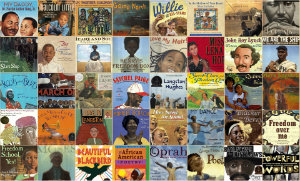Reframe Podcast: Episode 33

Illustrating African American Experiences

In this episode, look at a project that explores the African American experience through a literary genre and an art form that, at first, may seem like an unlikely source for the kind of deep and critical cultural analyses that could – according to an EHS expert -- lead to social change for all.
James Loy:
This is Reframe, The podcast from the College of Education, Health and Society on the campus of Miami University in Oxford Ohio.
In this episode, look at a project that explores the African American experience through a literary genre and an art form that, at first, may seem like an unlikely source for the kind of deep and critical cultural analyses that could – according to an EHS expert -- lead to social change for all.
There is a picture book called Ruth and the Green Book. And it’s not the kind of story usually associated with children’s literature.
Do you know about the Green Book?
Brenda Dales:
Most people don’t. Ruth and the Green Book is a fictional story. But it is based on this actual Green Book, and if you go to the Underground Railroad Museum in Cincinnati you can see one.
James Loy:
That’s Dr. Brenda Dales, Miami University EHS lecturer and one of the leading experts on the entire genre of children’s literature.
In this particular children’s book, young Ruth travels south on a cross-country road trip where she encounters racism for the first time. Along the way, her family
Ruth and the Green Book speaks openly about discrimination, Jim Crow laws, the realities of 1950s America, and all in a way that makes a difficult subject easy for children to understand.
It is also one of the books that Dr. Dales has highlighted in her recent class, “African-American Children's Book Art,” which shines a bright light on many of these critical cultural issues.
Brenda Dales:
All of my students have mentioned, at some point, “Why didn’t we read these books when we were young? Why isn’t this stuff in the
James Loy:
The reason, in part, is due to the whitewashed nature of various systems and institutions that have historically underrepresented certain perspectives. And the questions raised by Dr. Dales’ students are part of a socially conscious line of inquiry that not only highlights the voices of those who have been historically marginalized, but also the importance of an entire genre that can be far more personal and more reflective than most people realize.
In a lot of ways, children’s literature has transcended many of the stereotypes that still define it.
Today, it often channels deeper cultural signifiers that reflect and chronicle battles for equality, such as moments of turbulent political change, the profound need for continual progress, and more. And throughout her recent class, Dr. Dales and her students have explored texts and art that cover the history of the Civil Rights Movement, the Harlem Renaissance, slavery, and emancipation, and struggle for a modern racial identity construction, among others.
This content has also generated three separate lines of original student research, which explores the absence of LGBTQ themes and characters in children’s books, the use of collage art as a distinct expression of African-American culture, and how African-American illustrated children's books can even be a lens for social justice.
All three projects were recently featured at the 24th annual Miami University Undergraduate Research Forum and as part of a national conference at the Miami University Art Museum, where Dr. Dales’ class also runs in conjunction with the Spring 2018 Exhibition, Telling A People's Story: African-American Children’s Illustrated Literature.
Brenda Dales:
An exhibition like this points that out that there is just so much available in children’s literature. It’s just so vast. There are books that are fun and silly. But there are real serious books too. And it is not only just the words. It is the images as well.
James Loy:
Because of her collaboration with the art museum, her emphasis on diversity and equality, and an interdisciplinary approach that combined EHS with Miami’s College of Creative Arts and the College of Art and Sciences, Dr. Dales will also receive a brand new award, the very first ever “Beyond Boundaries: Intercultural Perspectives and Interdisciplinary Teaching Award.”
According to Dr. Shelly Jarrett Bromberg, Miami University Director of Liberal Education, this award exemplifies what she believes more Miami courses can achieve.
Shelly Jarrett Bromberg:
I see it as our opportunity to talk about race and critical race theory, to discuss what we mean by intersectionality, to talk about some of the issues that we may even be a little uncomfortable with. And I see that as a great way of underscoring what President Crawford wants to do. There is a lot that’s happening

